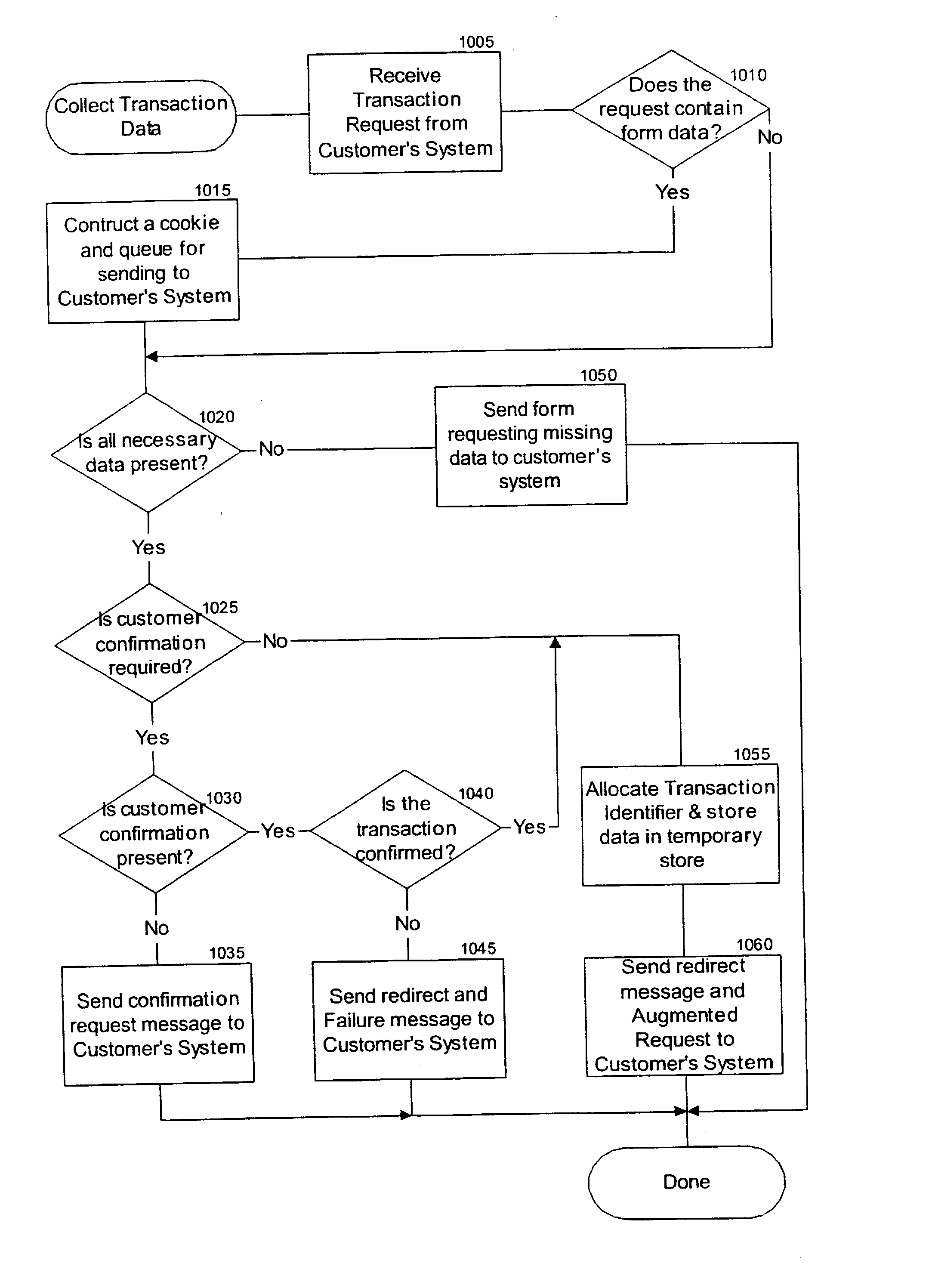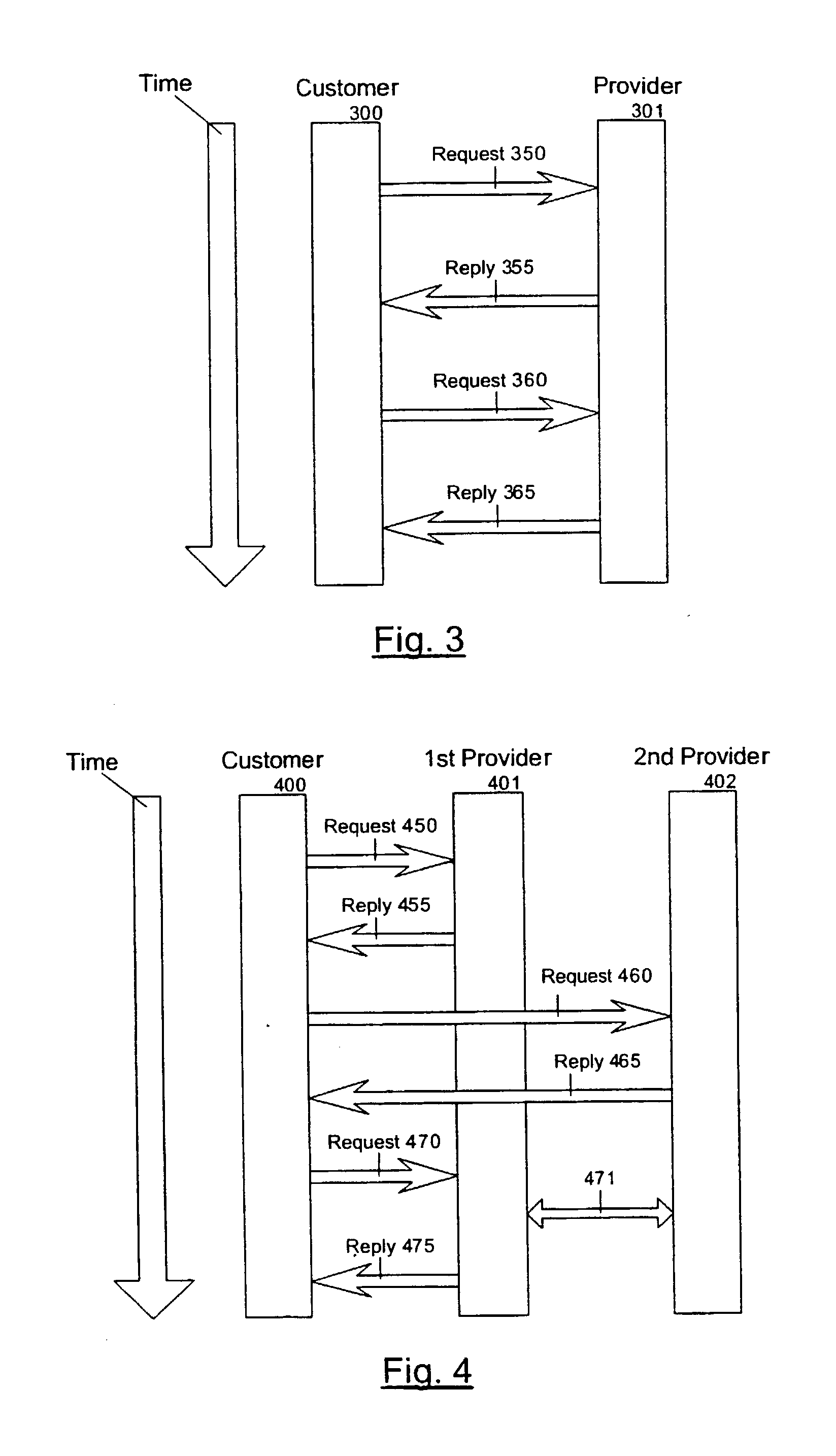Method and system for disclosing information during online transactions
a technology for online transactions and information disclosure, applied in payment circuits, payment protocols, instruments, etc., can solve problems such as loss of control, failure to ensure the security of vendor data, and customer risk that information may be unintentionally or maliciously disclosed to third parties, so as to facilitate impulse buying, reduce the barrier to online purchasing, and facilitate the effect of impulse buying
- Summary
- Abstract
- Description
- Claims
- Application Information
AI Technical Summary
Benefits of technology
Problems solved by technology
Method used
Image
Examples
first example
[0087] Two Parties--Customer & Vendor
[0088] FIG. 3 shows the sequence of events when a customer transacts the purchase of goods or services from a provider over the Internet using an embodiment of this invention.
[0089] The customer's system or user-agent 300 sends a request 350 for information to a provider's system 301. The provider's system 301 sends a reply 355 describing the goods or services for sale back to the customer's system. For each possible transaction the reply 355 contains a link to another location at the provider's system 301 containing data identifying the possible transaction, e.g. a link associated with an offer to sell stock item number 47 might look like this:
[0090] http: / / www.P301.com / buy?object=47
[0091] When the customer decides to purchase one of the items described in reply 355, the customer takes an action that causes the customer's system 300 to use one of the links in reply 355 to send a request 360 to the provider's system 301. The request 360 contains ...
second example
[0093] Three Parties--Customer, Vendor, Credit Agent
[0094] FIG. 4 shows the sequence of events using an embodiment of this invention when a customer places an order for goods or services with a first provider over the Internet and where the charge against the customer's credit card is handled by a second provider.
[0095] The customer's system or user-agent 400 sends a request 450 for information to a first provider's system 401. The first provider's system 401 sends a reply 455 describing the goods or services for sale. For each possible transaction the reply 455 contains a link to a location at a second provider's system 402. In this case the second provider is an agent for processing credit card transactions. Each of these links in reply 455 contains data identifying the possible transaction and identifying the first provider offering the transaction, e.g. a link associated with an offer to sell stock item number 9217 might look like this:
[0096] http: / / www.P402.com / buy?www.P401.com...
third example
[0110] Four Parties--Customer, Vendor, Credit Agency, Delivery Company
[0111] FIG. 5A shows the sequence of events using an embodiment of this invention when a customer orders goods over the Internet and several providers co-operate to transact the sale and delivery of those goods to the customer. The first provider is a vendor of various goods, the second provider is a credit card clearing agent, and the third provider is a company who will be responsible for the delivery of the item from the first provider to the customer.
[0112] As in the second example, a customer's system or user-agent 500 first sends a request 550 to a first provider's system 501. FIG. 5B-550 shows the request-line and headers from such a request made using the HTTP protocol to a provider with network name demoshop / dev.skea.com.
[0113] The first provider's system 501 sends a reply 555 with a page describing items for sale. For each possible transaction the reply 555 contains a link to a second provider's system 5...
PUM
 Login to View More
Login to View More Abstract
Description
Claims
Application Information
 Login to View More
Login to View More - R&D
- Intellectual Property
- Life Sciences
- Materials
- Tech Scout
- Unparalleled Data Quality
- Higher Quality Content
- 60% Fewer Hallucinations
Browse by: Latest US Patents, China's latest patents, Technical Efficacy Thesaurus, Application Domain, Technology Topic, Popular Technical Reports.
© 2025 PatSnap. All rights reserved.Legal|Privacy policy|Modern Slavery Act Transparency Statement|Sitemap|About US| Contact US: help@patsnap.com



